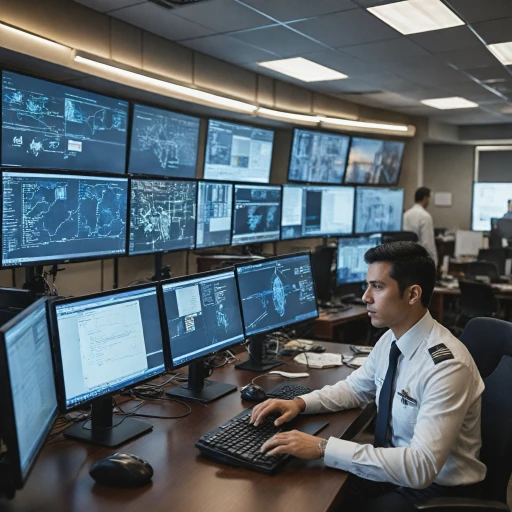Understanding the C-Suite
The Essence of the C-Suite
In the ever-evolving landscape of modern business, top-level executives hold a unique and indispensable position. Commonly referred to as the C-Suite, this elite group of leaders is fundamental to the strategic direction and overall success of an organization. Understanding what makes the C-Suite tick, and how they exert influence, is crucial for anyone looking to navigate the complexities of corporate leadership effectively. At its core, the C-Suite is composed of Chief Officers—such as the CEO, CFO, COO, and CIO—each bringing a distinct set of skills and insights to the table. These roles go beyond mere titles; they represent a profound commitment to steering the company towards its strategic objectives. Executives in these positions are more than just decision-makers; they are visionaries tasked with setting the pace for both short-term achievements and long-term growth. The effectiveness of the C-Suite is often a reflection of individual leadership styles. Each executive brings a personal approach to governance, which can significantly impact organizational culture, employee morale, and ultimately, the company's bottom line. As we delve further into these aspects in another section, one can appreciate how nuanced leadership styles play a pivotal role in fostering an environment of innovation and productivity. Additionally, the demands placed on the C-Suite have intensified with the rapid advancement of technology, placing even greater emphasis on strategic planning and financial oversight. The ability to integrate tech-driven insights into decision-making processes has become a cornerstone of modern executive responsibilities, further explored in subsequent discussions. For a deeper understanding of the art and intricacies of top-level leadership, explore our insights on crafting effective strategies in the blog "The Art of Business Strategy and Leadership." This comprehensive guide provides valuable perspectives on how C-Suite executives can harness strategic initiatives to steer companies towards greater heights. As we journey through the multifaceted roles of top-level executives, it becomes evident that the C-Suite is not just a layer of hierarchy but a dynamic force driving corporate innovation and excellence.Leadership Styles and Impact
The Power of Diverse Leadership Styles
In the dynamic world of business, the leadership style adopted by top-level executives profoundly influences the organizational culture and operational effectiveness. While some leaders may thrive on a transformational approach, inspiring and motivating employees towards change and innovation, others may adopt a more transactional style, focusing on supervision, organization, and performance. A transformational leader within the high echelons of the company inspires a shared vision, engendering a vibrant culture of enthusiasm and loyalty among staff. Their ability to challenge the status quo and embrace creative solutions creates a thriving environment for growth. On the other hand, transactional leaders excel in managing intricate details, developing systems that ensure tasks are completed efficiently and targets are met rigorously. The C-suite must often balance these differing styles, as the effectiveness of leadership can significantly impact business outcomes. To gain a deeper understanding of the functions and responsibilities of these high-level roles, consider exploring understanding the roles in the c-suite. Examining how different leadership approaches shape the organization is instrumental in achieving success.Impact of Leadership on Company Culture
Leadership styles exert a considerable influence on company culture—shaping how values are communicated, objectives are pursued, and challenges are addressed. C-suite executives hold the power to set the tone, from fostering an inclusive environment to establishing a culture of accountability and continuous improvement. In an era where company culture is a decisive factor for both employee satisfaction and customer loyalty, it is crucial for leaders to consciously cultivate a positive and productive workplace atmosphere. Leaders who actively engage with their team, encourage open communication, and recognize the contributions of employees strengthen the organizational fabric. Such attentiveness to employee welfare eventually translates into better customer service and enhanced company reputation. Navigating the complexities of leadership styles and their effects on company culture is an ongoing challenge. By understanding these dynamics, executives can strategically steer their organizations toward sustainable success.The Role of Technology in Executive Decisions
Harnessing the Power of Technology in Executive Decision-Making
In the rapidly evolving landscape of modern business, top executives must navigate an ever-growing array of technological advancements that influence their decision-making processes. The digitalization of industries has introduced opportunities and challenges, requiring leaders to integrate technology as a central component of their strategic frameworks. The contemporary executive team must be agile and forward-thinking, adapting their leadership styles and impact to embrace technological innovation. From data analytics to artificial intelligence, these tools can offer unprecedented insights and efficiencies that drive organizations forward. However, the successful implementation of these technologies depends on the C-suite's ability to effectively evaluate and integrate them into their corporate strategies. One of the critical aspects of leveraging technology in decision-making is understanding the data-driven insights it can provide. Executives can harness these insights to make informed and innovative decisions, enhancing their organization's competitive edge. This approach not only requires an in-depth understanding of technological tools but also a cultural shift within the organization to foster a tech-savvy mindset among all employees. Furthermore, the role of technology extends beyond mere data collection and efficiency improvements. It influences every facet of the business—from financial oversight to strategic planning, as discussed in other parts of this article. Executives must ensure that their technology strategies align with their broader organizational goals, ensuring seamless integration and maximum impact. For C-suite members aspiring to transition seamlessly from one executive role to a board position, understanding the ways technology shapes decisions is paramount. If you're interested in exploring the critical skills necessary for this transition, consider checking out this guide to navigating the C-suite to board transition. By viewing technology as a strategic enabler rather than just a cost center, C-suite executives can foster an environment that embraces continual learning, agile thinking, and innovative solutions. This approach will empower executives to lead their organizations effectively into the future, adapting to change while creating a resilient and thriving business environment.Financial Oversight and Strategic Planning
Financial Acumen in Strategic Decision-Making
In the dynamic world of modern business, top-level executives play a crucial role in steering their companies towards financial success. Their ability to oversee financial operations and engage in strategic planning is vital for sustaining growth and ensuring long-term profitability. This responsibility requires a deep understanding of financial metrics, market trends, and the ability to anticipate potential challenges.
Effective financial oversight begins with a comprehensive analysis of the company's current financial health. Executives must be adept at interpreting financial statements, understanding cash flow, and assessing risk. This knowledge allows them to make informed decisions that align with the company's overall strategy and objectives. Moreover, by leveraging their financial expertise, executives can identify opportunities for cost optimization and revenue enhancement, which are critical for maintaining a competitive edge.
Strategic planning is another cornerstone of executive financial oversight. It involves setting long-term goals, determining the necessary resources, and devising actionable plans to achieve these objectives. This process requires collaboration across departments, as discussed in the sections on leadership styles and the impact of technology. By fostering a culture of collaboration, executives can ensure that financial strategies are integrated with other business functions, such as marketing and human resources, to drive cohesive growth.
Ultimately, the ability of top-level executives to balance financial oversight with strategic planning is a testament to their leadership capabilities. It reflects their commitment to guiding their organizations through the complexities of modern business landscapes, ensuring both stability and innovation.














